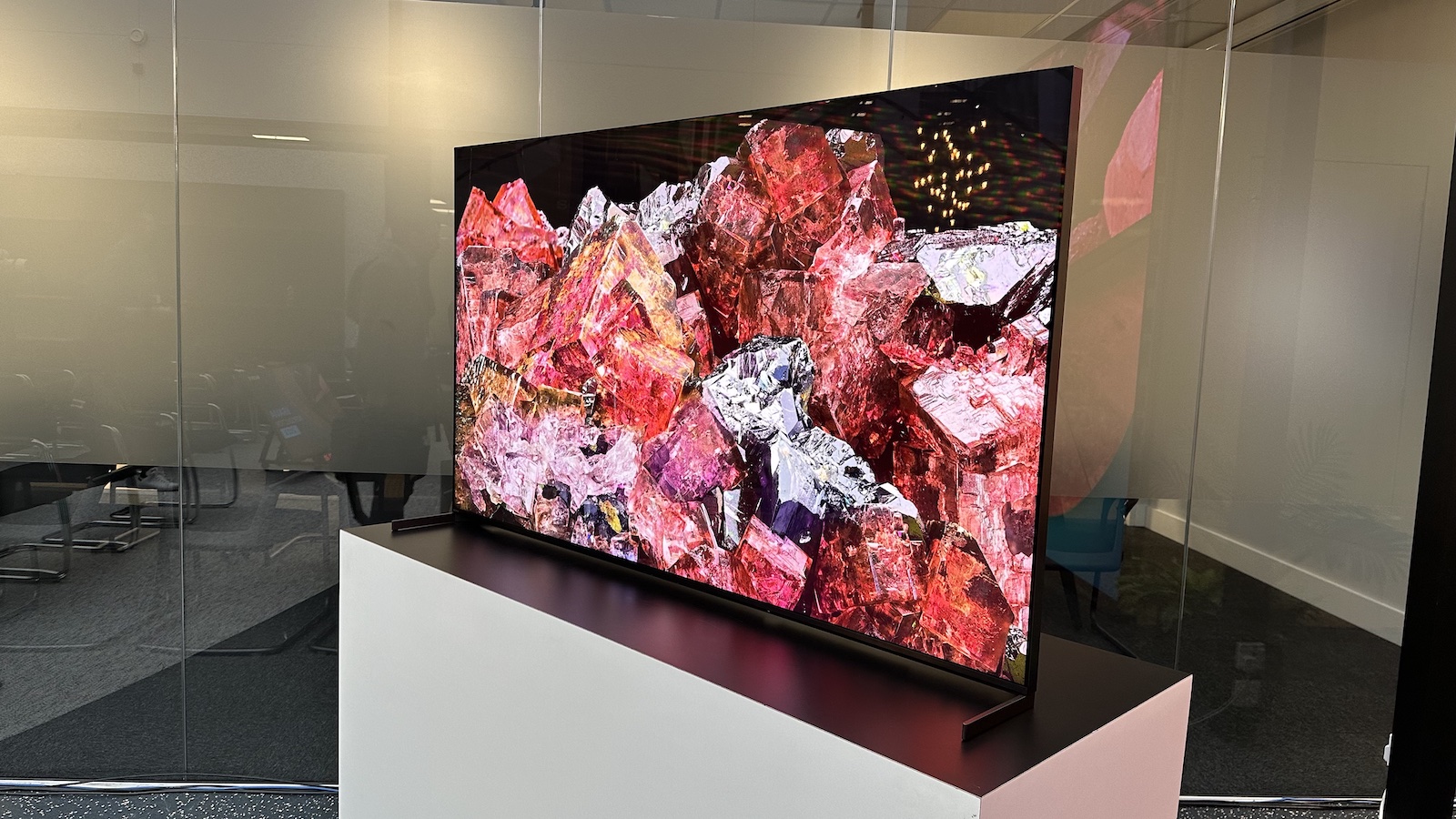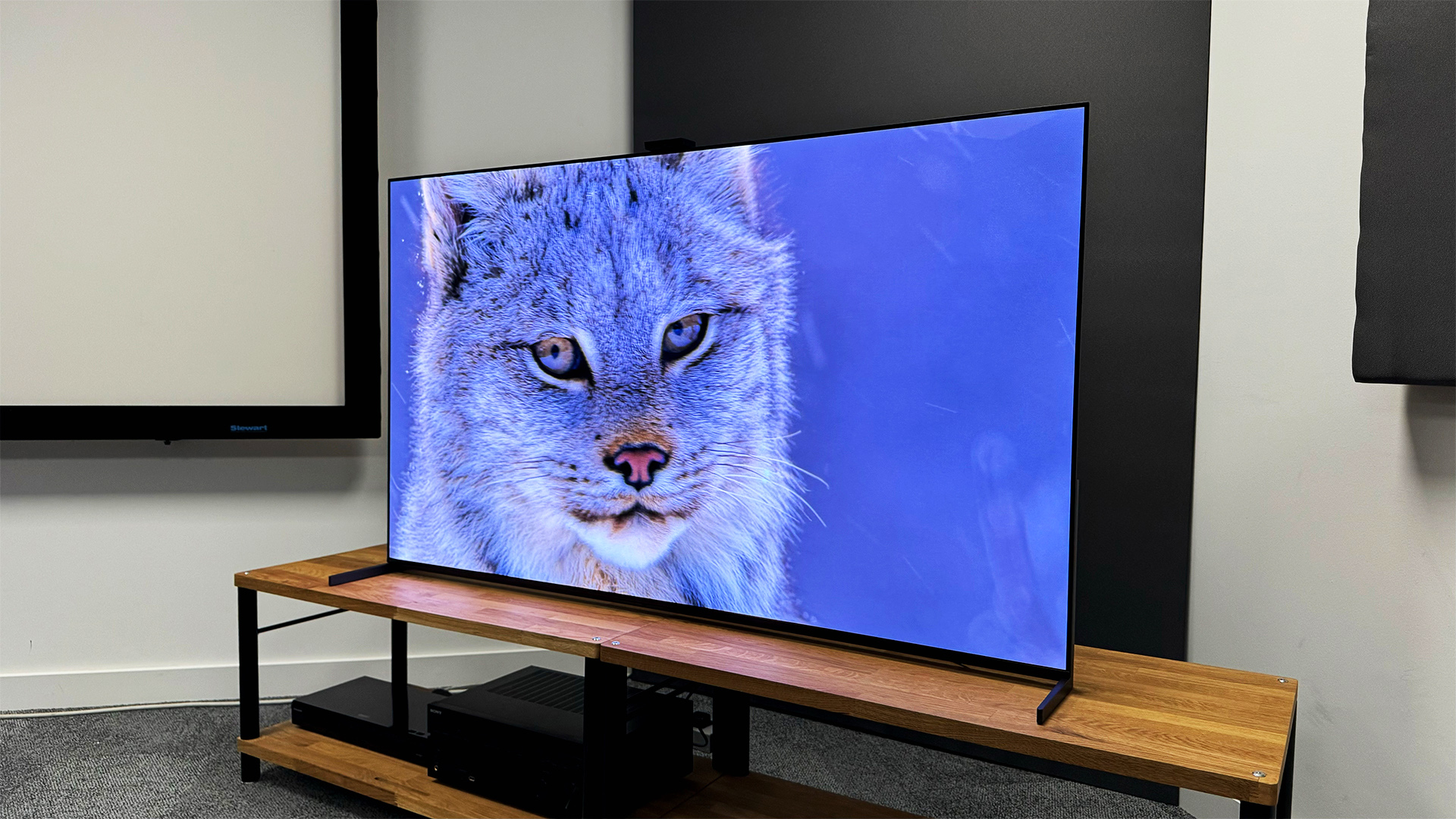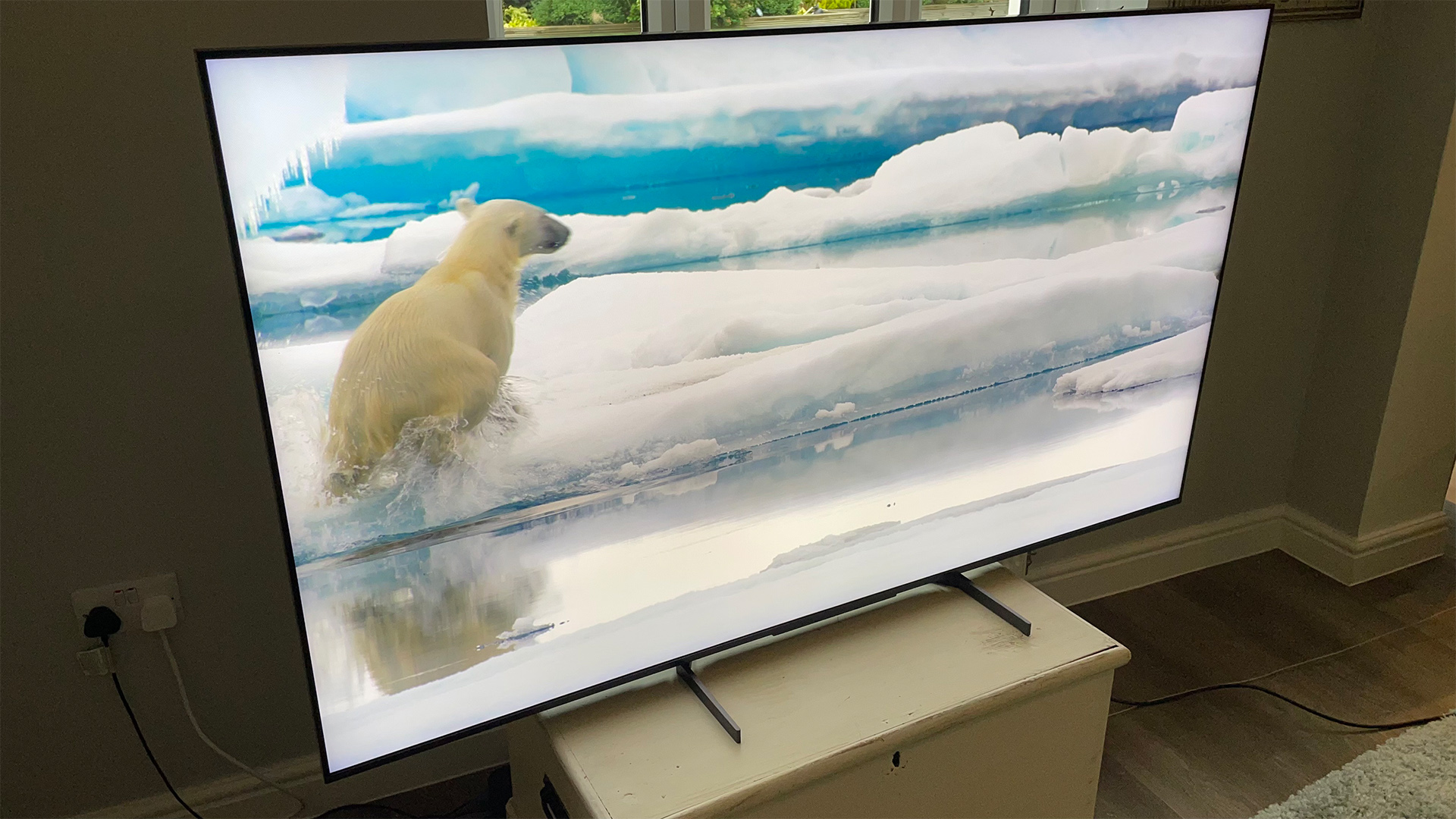
Way back in November, I was treated to a visit to several of Sony’s offices in Tokyo, where various future Sony technologies were demonstrated and discussed. Inevitably, much of what I saw and was briefed on was (and, in some cases, still is) embargoed, but I wrote about the brand’s plans for content creators to be able to change the picture settings of your Sony TV and its new 4000-nit mastering monitor last year and I can finally now write about the most interesting and potentially industry-shaking thing that I saw during the trip: Sony’s next-gen TV backlighting system.
Let me say right from the off that this is fairly techie stuff that’s quite hard to describe succinctly, and my efforts to explain everything in this piece haven’t been helped by the fact that Sony, in its infinite wisdom, has said that I can’t use any of the photos I took or illustrations provided during the demo (that's last year's X95L at the top of this page). That’s why, before I get into the details, I’m going to give you a bit of a summary of what the tech is and why I think it’s potentially a massive deal for the TV industry.
The short version

So, to get straight to the point, Sony has developed a new backlighting technology that it seems intent on using for its new flagship TVs. No specific models have been confirmed and there’s a chance this technology could be destined for sets arriving next year or beyond, but my sense is that it will make its debut on Sony’s flagship TV for 2024 – which, if correct, means Sony’s flagship TV will be a backlit model rather than an OLED model.
Sony’s decision to go down this road is down to two things. First, it believes that more movies are going to be mastered to brightness levels beyond the approximate 2000-nit peaks that OLED TVs have recently hit. Second, it has developed a backlighting system that it believes is accurate enough to express these supremely bright highlights without harming contrast through black-compromising blooming.
Inevitably, the backlight in question involves Mini LEDs, the sort of which are now fairly common in high-end backlit TVs from various manufacturers, including Sony. But Sony’s engineers are at pains to stress that it’s not the size of the LEDs that really counts, but how you use them. The company has already flexed its muscles in this regard, having produced several backlit models in 2023 that surpass their rivals in terms of local dimming performance despite having significantly fewer individual dimming zones.
Now, though, it intends to combine this supreme contrast control with vastly more dimming zones than it has ever produced before; and, having seen the demo, I can confirm that it very much looks as though Sony is on to something. Part of the demo (you’ll find more eyes-on impressions below) involved a prototype TV with a screen split in two, with one half having the LCDs necessary for the TV to perform as a standard TV and the other being transparent, revealing the Mini LEDs of the backlight. It was an extraordinary setup, the likes of which I have never seen before and that I very much wish I could show you through photos. It illustrated just how accurate the backlight is – while the image on the backlight-only portion of the screen was blurry compared with the ‘real’ image (not to mention monochrome), it was always obvious what object was on screen and the subtle variations in brightness were clear to see.
The implications of Sony taking this approach are massive, but this also feels like a big risk that the company is taking. We’re talking about one of the most important brands in TVs more or less stating that backlighting is the future and that OLED may have reached its limit. And that’s fairly hot on the heels of one of the other most important brands in TVs – Samsung – giving up on its 'backlighting is the only way to go' stance and finally launching its own OLED TVs.
And that brings me to the risk. OLED is now very much considered the ‘best’ mainstream TV technology – and not just by TV journalists and enthusiasts, but also by the public at large. Can Sony really convince everyone that, actually, backlighting technology is in fact better? Even if the final TVs in which this new tech appears are absolute stunners, it’s going to be a tough sell. At the very least, Sony is going to have to get very creative with its marketing.
The fine details and head-to-head demos

So, what makes Sony’s new backlighting system so different from those that have come before it? We have already established that it uses the same type of Mini LEDs that are already in use in plenty of other TVs, after all.
Apparently, it’s all down to the LED driver, which is an all-new and unique Sony design. This LED driver is, according to Sony, the smallest in the world – significantly smaller than a grain of rice, in fact. Looking at the backlight panel (again, I really wish I could show you the photos), it looks like a tiny black rectangle, and there are lots of them dotted across the board.
In the prototype used for the demo (Sony is at pains to state that these numbers can and almost certainly will vary across models and sizes), each LED driver controls six ‘channels’, each of which consists of four LEDs. Each channel is effectively a zone that can be controlled independently, but the unusual and next-gen element is that the driver can apply fairly subtly different amounts of current to each zone, exerting greater control over the amount of light that each one produces.
This isn’t just a big deal for contrast accuracy but also for power consumption. Sony explained that the typical method of getting mid-level brightness from an LED is to apply full current for half the usual length of time, and that a typical LED driver applies the same amount of current across all of the LEDs it controls. By applying only the necessary amount of current to each zone, Sony says efficiency has been improved by 30 per cent over last year’s X95L. It’s more efficient than the A80L OLED apparently, too.
Thankfully, Sony was willing to demo its prototype backlit TV against both the X95L and the A80L – and it’s got clear advantages over both. Most noticeable was how much brighter it was. Perhaps unsurprisingly, it stuffed the A80L OLED in this regard, but it was also significantly brighter than the X95L. It also had noticeably better contrast as the more granular light control and increased zone count (Sony wouldn’t be drawn on specific zone numbers across the panel as a whole) allowed areas to be driven brighter without so much fear of blooming.
This point was further demonstrated when the Sony engineers switched off the LCD layers of both the prototype and the X95L, allowing me to see the backlight at work behind. The extra brightness of the prototype was even more obvious, but so too were the subtle gradients of light its backlight was producing. Just as striking to me, though, was how much more unlit space there was between the areas of light on the prototype backlight. These areas of true black were often a bit grey on the X95L, which has to work harder at the LCD level to keep the light in check. The prototype model clearly had a better base layer of contrast control.
With the LCD layers switched back on, I was further struck by the greater colour volume of the prototype over the X95L and A80L, in both high- and low-brightness areas. Shadow detail looked better, too.
My only negative impression was that while blooming was essentially non-existent when viewing the prototype straight-on, a small amount could be seen (in the black background around a Japanese lantern, for example) when viewed off-axis. The X95L suffered more in this regard, so the prototype still appears to be an improvement, but it’s an area where OLED still reigns supreme.
Of course, it’s impossible to draw really firm conclusions from an eyes-on session such as this for all sorts of reasons, from the content and settings used to the viewing conditions. The biggest factor, though, was the prototype nature of the TV used for the demonstrations. We just don’t yet know how much of its technology will make it into production, or when. We probably won’t find out at CES either, as Sony is expected to save its 2024 TV launch for later this year.
When the new range is announced, though, my feeling is that it will feature a backlit TV rather than an OLED at its summit, and that could send shockwaves around the TV industry.
MORE:
Can't wait? These are the best TVs you can buy right now
OLEDs still feature heavily in LG's 2024 TV range







